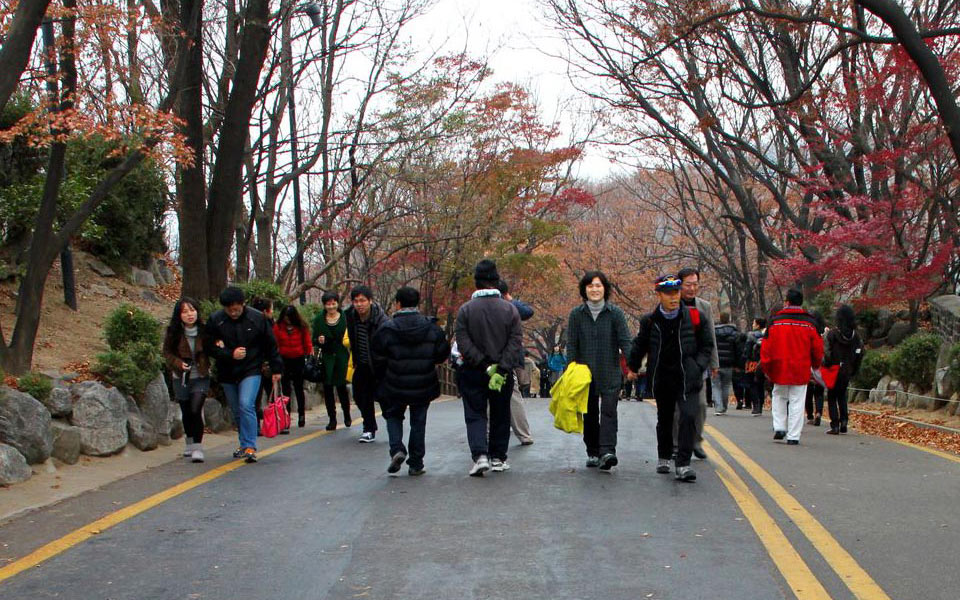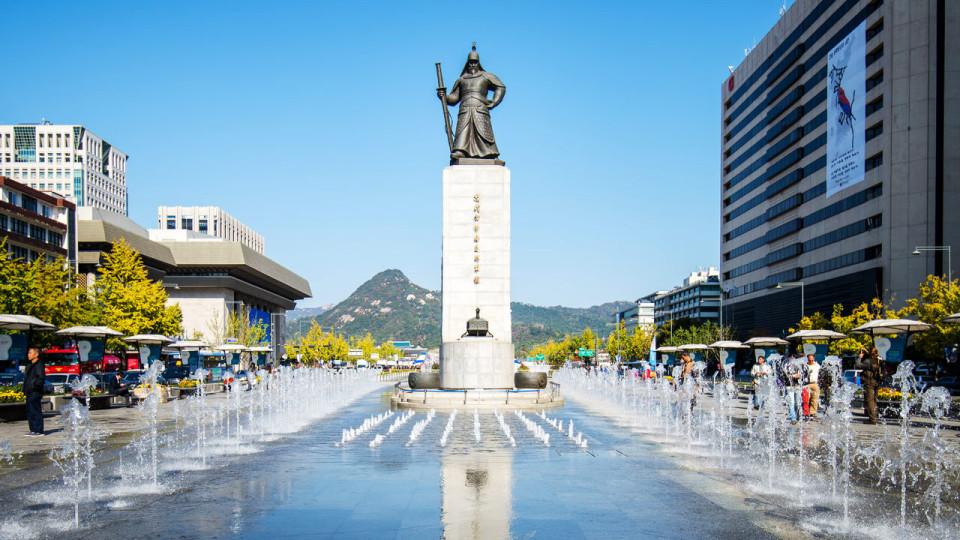From the chaotic crowds of the Seoul International Marathon to the quiet hills of the Jeoje Imdo Run, there are plenty of opportunities for the avid runner in South Korea. But what should travelers expect before taking off into the mountains? How many signs and guideposts will be in English? Who should worry about the overexposure law? What’s jangma, and how does it effect running trails?
The good news is that all cultures are conquerable with a good attitude and plenty of traction. If you’re considering South Korea for your next marathon, here are 10 things to keep in mind before breezing past ancient temples and city skyscrapers alike.
1. Don’t Expect English
It may sound obvious, but many runners still experience culture shock when they reach South Korea and realize that very few people speak English. While it’s true that big cities like Seoul and Incheon will have more in the way of English maps, trails and guidebooks, it still isn’t the primary language, and remote areas of the country might not have any English direction at all. Prepare for this in advance to avoid headaches in the future.
2. Know The Events
South Korea holds a number of national marathons every year, but each one attracts a different demographic. For example, the Chuncheon International Marathon is large, popular and well-celebrated, so the crowds are always lively and varied in age. The Daegu International Marathon, on the other hand, is a smaller marathon run only by serious participants, a number of whom go on to beat world records. If you’re traveling to South Korea for the express purpose of running a marathon, make sure you don’t join the wrong one.
3. Don’t Tip
Tipping is seen as rude in South Korea, so travelers are advised to keep their won to themselves, especially in rugged, isolated areas where the locals aren’t accustomed to the practice. The marathon staff in Busan might brush off the gesture with a smile, but the porters deep in the mountains of Gwangju might think they’re being insulted. Never give any money to hotel waiters or bellboys, either. It could bring accusations of corruption and bribery to their bosses.
4. Beware Of The Rainy Season
Also known as “jangma”, the rainy season of South Korea hits hard and fast during the months of June and July. It isn’t uncommon for roads to close and running tracks to flood. Heavy downpours in 2011 even resulted in deaths, though it should be noted that this is far from typical. Runners should simply stay cautious and pay attention to weather warnings if they’re competing during the summer.

5. Pick Your Train
Trains are one of the most common methods of transportation in Korea. The cheapest option is the Mugunghwa, which costs less than 30,000 won ($25 USD) but is also quite slow, while the Saemaul is a little more expensive but twice as fast. The speediest of all is the KTX, which can take its passengers anywhere in the country in a matter of hours. Make note of your marathon check-ins and checkpoints to decide the best train for your needs.
6. Dress Conservatively
In early 2013, Korean President Park Geun Hye passed an “overexposure law” to target public nudity and indecency. While there have been no official rulings on what does and doesn’t constitute “overexposure”, marathon runners would be well-advised to leave their skimpy exercise outfits at home. Women should take particular care: While shorts are okay for both genders, anything that bares the stomach or shoulders is considered in bad taste, and those fashions are in abundance for female runners. Spaghetti tops are questionable; sports bras are out of the question. Those found in violation of the overexposure law could be forced to pay 50,000 won ($45 USD).
7. Get Your Shots
South Korea is a healthy, industrialized nation, but travelers everywhere should be vaccinated against major diseases like malaria and rabies. The CDC also recommends protecting yourself against typhoid, which can be transferred through contaminated food and water, and Japanese encephalitis, which is contracted through mosquito bites. The last thing anything wants during a run through Mount Kumgang is the sudden onset of a fever.

8. Posted Prices Aren’t Negotiable
South Korea has an abundance of stalls, carts and street markets, but don’t make the mistake of thinking that all vendors are willing to bargain. Unlike third-world markets where sellers are desperate for business and haggling is commonplace, South Korea is a proud and economically developed nation, so vendors are outdoors because of preference, not necessity. Many will take offense if you try to treat their stalls like a garage sale.
9. Take Off Your Shoes
Like many Asian nations, South Korea discourages the wearing of shoes inside homes, schools and even some restaurants. Leave your running sneakers in the entryway! You should also beware a number of cultural tics that may seem odd to a non-Korean, like waving someone over with downward palms or gesturing with the middle finger. No offense or strangeness is intended; it’s simply the way Koreans operate.
10. There Aren’t Many Foreigners
Last but certainly not least, runners in South Korea should be aware that their skin tone will make them stand out from the crowd, especially in beautiful, remote areas where many marathons eventually snake. South Korea is ethnically homogenous, which means that 99.9 percent of Korean citizens are Korean. Depending on the people you visit and their previous exposure to outsiders, your reception may be one of bewilderment, hesitance or uncertainty. Keep a smile on your face as you travel to avoid misunderstandings.

These are just 10 tips for running in South Korea. Once you cross the starting line, all cultural quirks will be forgotten in the face of the sun and sky, but these guidelines may help you navigate the country in between events. Generally speaking, you should have no difficulties adjusting and even thriving during your visit. Good luck!





